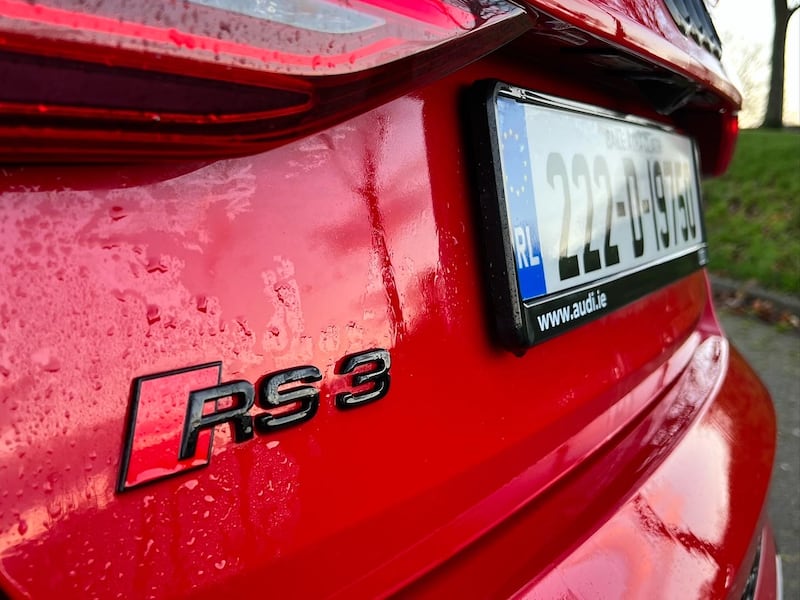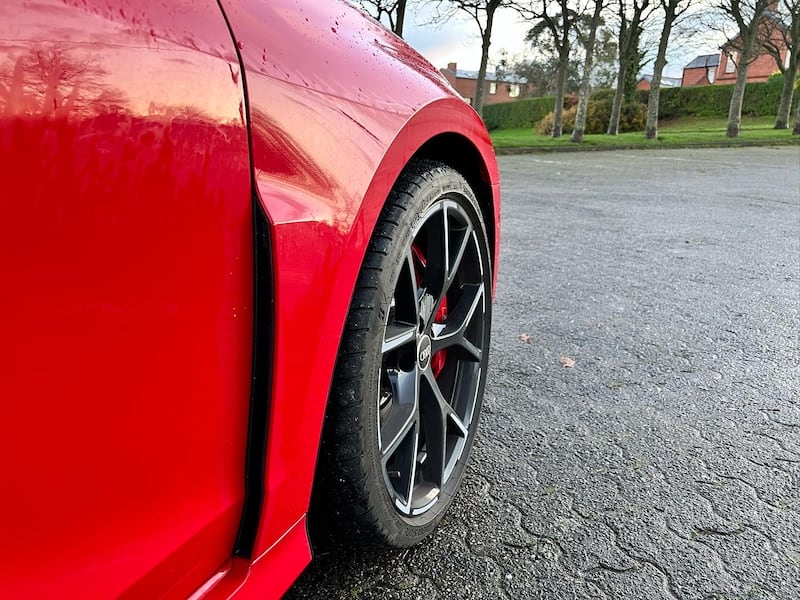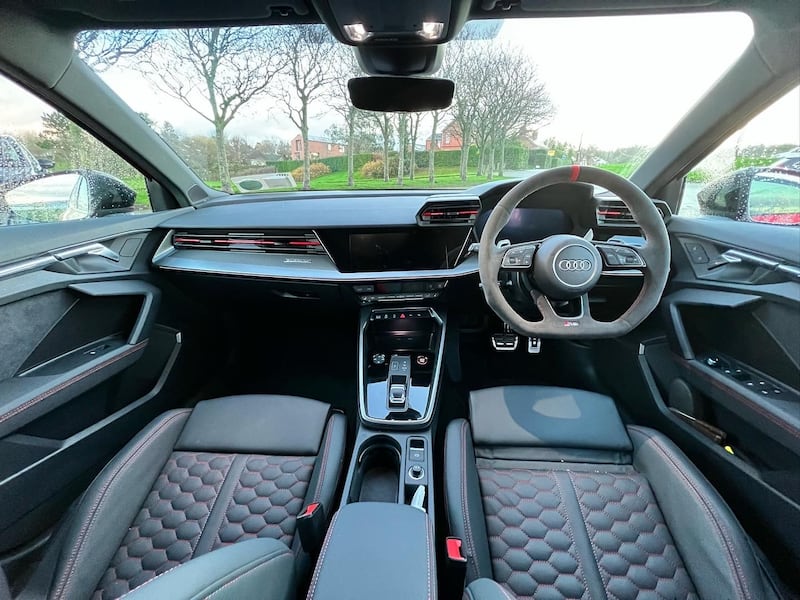For best effect, find a forest. While Irish rallying has always been more tarmac-focused, the best place to listen to a rally car is in the forest. There’s something about the way the sound of a rally car’s engine echoes and propagates through the trees that is truly magical. And few rally car engines ever sounded as good as the Audi Quattro’s five-cylinder turbo.
As the old joke kind of goes, if you were trying to make a rally engine, you wouldn’t have started there. The Audi five-cylinder engine was long and hefty, and probably the least-ideal powerplant for conversion into a rally weapon. Yet Audi made it work, made it powerful, and made it sound almost unbearably brilliant. Set against the high-buzzsaw chorus of Ford’s BDA, the Audi five-pot sounded like Orson Welles arguing with an artillery barrage — all deep booms and cheerful rumblings. It’s a sound that sends tingles down spines to this day.
You won’t hear it on a rally stage anymore, but thankfully Audi has managed to keep its five-cylinder heritage alive by creating a new 2.5-litre five-pot turbo. Originally created for the Audi TT RS model in 2009, it’s still going today, and is having something of a swansong (a loud, gargling swansong) in this, the latest RS3.
Let’s get a big elephant out of the way — yes, this is an Audi A3 with a €90,000 price tag and yes you’d have to be just a little bit nuts to pay that. Then again, this is an Audi A3 which can humble the much pricier likes of a BMW M3. While the RS3 can’t match the six-cylinder BMW for power — with 400hp to the Munich car’s 510hp — it has some serious four-wheel-drive trickery to deploy in its favour.
How your mini travel shampoo is costing your pocket and the planet - here’s an alternative
My smear test dilemma: How do I confess that this is my first one, at the age of 41?
The 50 best films of 2024 – the top 10 movies of the year
Paul Mescal on Saturday Night Live review: Gladiator II star skewers America’s bizarre views about Ireland

The M3 takes 4.1secs to reach 100km/h from a standstill, but the diminutive RS3 can manage the same sprint in just 3.8secs, and it sounds even better along the way. Much of the advantage is down to the quattro four-wheel drive set-up which does away with the traditional rear differential in favour of a multi-plate clutch setup which allows the RS3 to more cleverly distribute engine power between the rear wheels.
As a bonus, given we were testing the RS3 just as the recent cold spell settled icily in, it also gives the car incredible stability. You’d think that driving a car with this much power and torque (500Nm) on summer tyres in the middle of an ice storm would be foolhardy, but the RS3′s rallying genes shone through and it never put a tyre even slightly out of line.
Doubtless, it would have if we’d pushed the button marked RS Torque Rear. This function sends most of the engine’s power to the back wheels and is basically Audi’s way of giving the RS3 a “Drift Mode”. Notably, it says on the central touchscreen that this mode is never, ever to be activated on the public road. We were good boys — honest, Santa …
Either way, the RS3 feels more alive under your palms than the previous model. The steering wheel, clad in grippy imitation suede, gives a constant feed of information about the car’s attitude and remaining grip levels. Whereas old fast Audis tended to feel like a rocket-powered sledgehammer — all weight and little finesse — this RS3 feels far more lively and talkative. It’s massively good fun.

The soundtrack really helps. Although the standard-fit DSG automatic gearbox means that there’s slightly too much of the trombone-style brrrrp-brrrrp-brrrrp noise out of the exhaust (which just makes it sound like a PlayStation sound effect) the engine’s other noises — that heavy, treacly intake noise and the offbeat warble that comes from five cylinders — make it sound far more meaty and impressive than rival turbo engines. Mercedes’ 2.0-litre AMG four-cylinder engine may be an engineering marvel, but it can’t sing like this.
Of course, it’s thirsty. We averaged 9.3-litres per 100km during our week with the car, which isn’t going to win any friends at the next Greenpeace agm. Then again, Audi will only make and sell a handful of these RS3s, so maybe it’s not quite the climate criminal it appears to be.

It’s also a little tight in the back, the quilted leather of the bucket seats feels a little too firm, and it takes forever to warm up on a cold morning. Small prices to pay, all round. It’s still a practical and useable thing, and the all-weather capability of the four-wheel drive setup is not to be sniffed at. Especially this week.
The price, though? Oh yes, we forgot to mention — €93,805 is the base price of an RS3, but ours came with options, including that Nappa leather on the seats (€1,927 and we could have done without it), a premium B&O stereo (that will set you back €1,522 all on its own), and €1,927 worth of sports exhaust. The €1,349 Digital Matrix LED headlights are a must-have though, especially with the long nights this time of year. It’s like carrying a private sun around with you.
All of that, plus a few more ticks in the options catalogue, pushed the price of our test car up to €108,945 which is not only deeply silly, but rather more dangerously is €2,000 more than the starting price of the brilliant all-electric e-tron GT four-door coupe. True, that’s not the astonishing RS model, but it’s still a fast and engaging car, and one with no environmental conscience.
You’d miss the noise, though. Especially in a forest.
Audi RS3 Saloon: 2.5-litre turbocharged five-cylinder petrol engine developing 400hp and 500Nm of torque, powering all four wheels via a seven-speed automatic transmission. CO2 emissions (annual motor tax) 205g/km (€1,250). Fuel consumption: 8.9kWh/100km (WLTP). 0-100km/h: 3.8sec. Price: €108,945 as tested, RS3 starts from €93,805. Our rating 4/5.
Verdict: A hooligan in a nicely-cut Hugo Boss suit. Aurally glorious.





